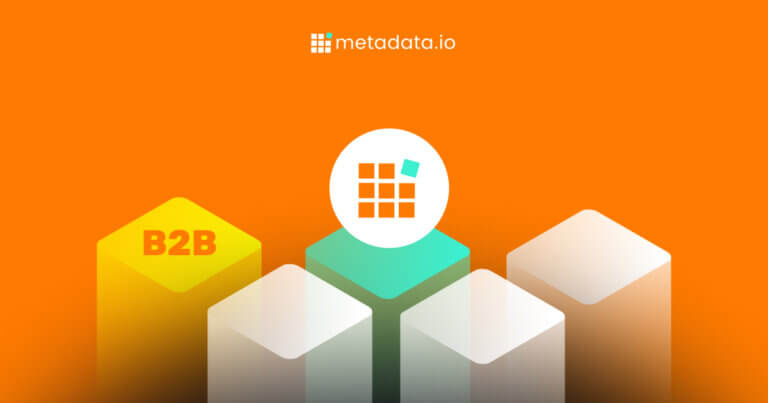Reporting Doesn’t Have to Be a Nightmare
We’ll say it: Reporting is a nightmare for performance marketers today.
A 2022 survey found the greatest concern in B2B marketing to be the rapid “decline in the ability to measure campaign effectiveness on tech platforms and the open web.” Reporting is the worst for modern marketers, no matter how analytical or Google Sheets-savvy they are.
Add consumers’ cross-channel behavior and the decline of third-party cookies to the equation, and things only get messier.
You can do everything right; you can build high-performing creative, select the best offer types, and orchestrate fantastic experiments. But if you can’t capture and share a complete view of how it’s all coming together, you’ll never get promoted.
The most experienced performance marketers struggle to find the 30,000 foot view that ties everything together in native ad channels.
Why?
This article answers that question and explains how Metadata makes it easier for performance marketers to get that big picture view, tie campaigns to revenue, and end the nightmare for good.
The problem(s) with reporting in native ad channels
The first sentence of this article, about reporting in Meta’s ecosystem, reads: “Meta Ads Reporting allows you to create, customize, export, share, and schedule reports on your ad performance based on a set of parameters that you choose.”
That’s verbatim. Go to LinkedIn, Google, or any display network, and a similar string of words awaits—and they’re all true.
You can create, customize, export, share, and schedule reports on ad performance based on a set of parameters you choose.
But those parameters aren’t great.
Let’s look at some of Facebook’s parameters:
- Performance (reach, impressions, delivery)
- Engagement (page engagement, photo views, post saves)
- Conversions (adds to cart, adds of payment info, donations)
- Settings (objective, ad set budget, campaign budget)
You might be thinking: “What’s wrong with these metrics? I’ve been using them to measure my paid campaigns for ages.”
I get it, but these vanity metrics don’t offer real insight into how your campaigns generate pipeline and revenue. Unfortunately, they’re all you have to work with in native ad channels. Don’t settle for inflated vanity numbers.
Take this image ad below from UiPath that caught my attention. It’s linked to a landing page and has likely reached thousands of people in their target audience. Overall, it’s a solid ad.
It also got 165 reactions and four reposts. Is that good? That’s subjective.
Do those metrics give performance marketers at UiPath actionable insights into how the ad ties to pipeline and revenue? That’s not subjective. They don’t.
I’m not saying UiPath’s marketing team is setting its sights on these metrics, but if they are, I’d imagine they’re having a tough time figuring out if their ads are working or driving actual business results.
This brings us to a brutal truth: Native channels aren’t connected to each other, so silos and inconsistencies are a fact of reporting. This makes it difficult (read: impossible) for performance marketers to get an accurate, bird’s eye view of a campaign’s true performance.
Multi-channel reporting? Good luck.
Not that this is news to you, but your B2B buyers aren’t browsing just one channel. Scrolling through LinkedIn, Facebook, Google, and any number of websites on the same day is normal. This behavior is the norm during the buyer’s journey, too.
Not convinced? Here’s proof from Gartner:

Feel free to zoom in, but I don’t think that’s necessary to get my point: The B2B buying journey is complex—and this doesn’t even consider that the typical buying group for expensive B2B software has six to 10 people involved.
Measurement, reporting, and attribution across native ad channels is a pipedream.
Here’s why:
- There aren’t standard metrics and every channel measures performance differently
- It’s impossible to get a complete view of performance because B2B marketers run campaigns in multiple channels
- Budgets exist in silos, making it impossible to see what’s working and optimize across across channels
Without standard metrics and a single source of truth, performance marketers can’t see how paid campaigns are creating (not just influencing) both pipeline and revenue. How is anyone supposed to know what they can do to stretch their marketing dollars further?
Why Metadata is the obvious answer to paid campaign reporting
Native ad channels just won’t cut it for performance marketers anymore because…
- Vanity metrics don’t tie back to pipeline and revenue
- There’s no standardization across channels
- You can’t get a complete performance view across channels
The good news is there’s a solution to all this: Enter Metadata.
With Metadata, performance marketers forget about the challenges above and finally use native channels to run strategic campaigns they’ve only dreamt about.
People do things like…
- Integrate Metadata with their CRM or marketing automation platform to see which ads, audiences, messaging, and channels drive real business results
- See account-level reports on engagement, qualified leads, opportunities, and revenue
- Understand changes in key performance indicators across channels
This is all possible in Metadata; B2B marketers are building MQL-to-closed-won reports (that they trust) and making better decisions because they know which experiments are performing and which ones are just sucking up spend.

It’s out with “spray and pray” advertising and in with generating leads that will go somewhere good.
And let me tell you something: As someone who relies on having a consistent way to accurately report on campaigns and optimize for performance and efficiency, I can’t imagine my life without Metadata.
I don’t have to jump tabs to see how things are working on different channels or sit back and wonder if my impressions actually matter.
Instead, I have a single source of truth that can tell me in real-time how my campaigns are performing and where we should double down.

And I’m grateful for that, especially when many leadership teams are slashing marketing budgets without lowering goals. You know, everyone’s favorite “do-more-with-less” motto. With Metadata, I can consistently prove our campaigns drive market-sourced pipeline and revenue.
I can’t do that in native ad channels. Trust me; I’ve tried.
Plus, with insight into these post-conversion metrics—think opportunities created, cost per opportunity, and revenue—I can reallocate my budget in the smartest way possible (or have Metadata do it for me).
Get reports and insights without spending all day in Excel
What’s my trick? Automation.
The best performance marketers possess both skill and experience. Unfortunately, these traits are worthless if B2B marketers don’t have time to execute.
If B2B marketers had more time, energy, and resources, the world would be a better place; I know for a fact that ads would be a lot more creative and compelling and a lot less “Get your copy of this eBook today!”
Time savings are at the heart of Metadata, thanks to built-in automation.
Here are some examples:
- Auto Pause Rules: Stop inefficient campaigns based on pre-defined parameters you need to see from each campaign and experiment.
- Sales Alerts: Send automatic alerts to Salesforce users to ensure your team gets notifications as soon as leads and accounts engage and convert.
- Notifications: Enable Daily Operations Digest to receive email updates about budget pacing, recently paused experiments, and more.
And the crème de la crème: Metadata will automatically allocate the remaining campaign budget across channels based on what creates pipeline and revenue.
With that giant chunk of my calendar now wide open, I can focus on work that really matters, like strategy, creativity, and revenue generation. The same would be true for you if you ditched native ad channels and used Metadata for reporting.
So, come to the dark side. Wake up from your reporting nightmare. Call it quits, and switch to Metadata. Actually enjoy performance marketing again. You won’t regret it; I know I don’t.




